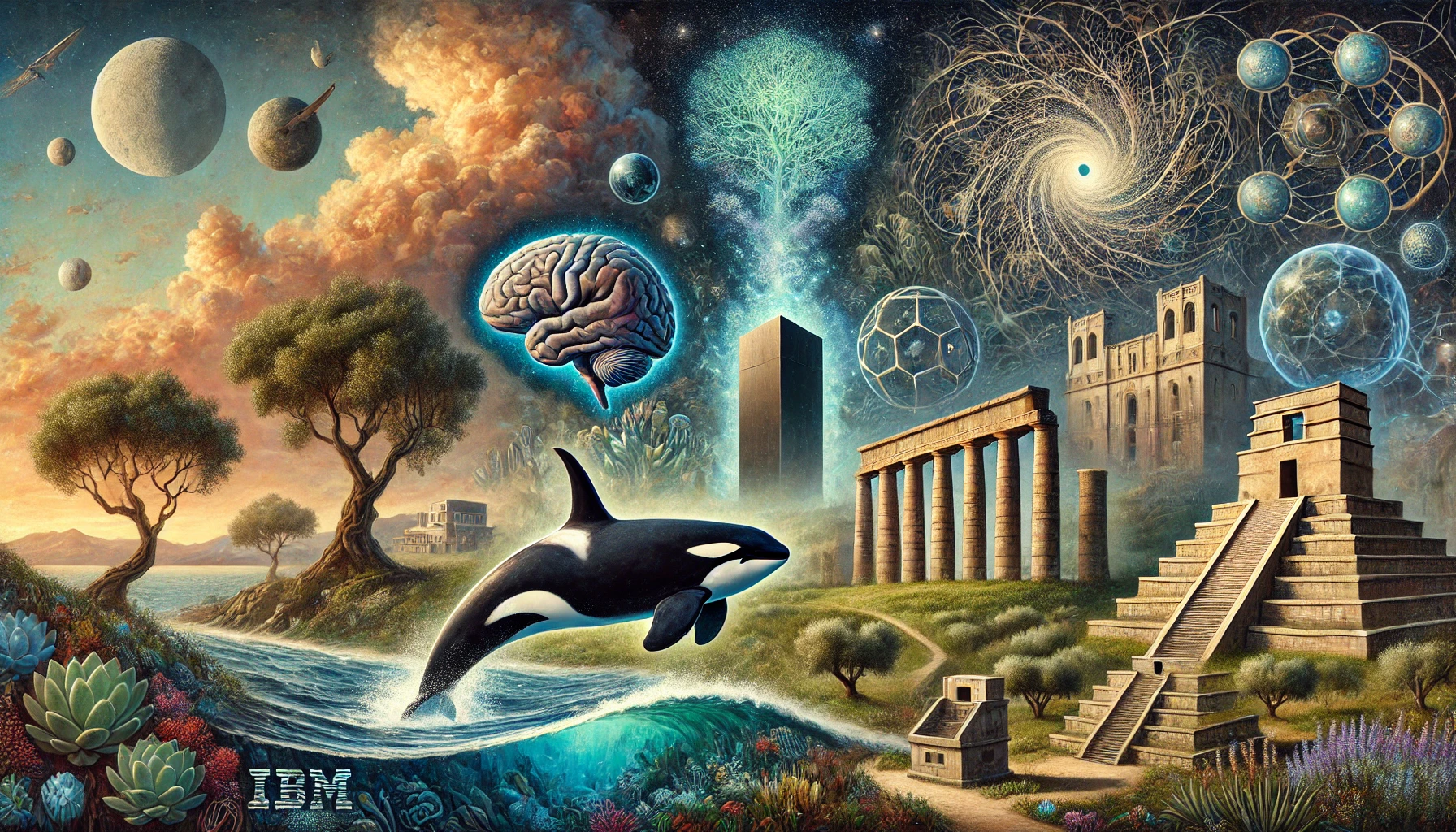Orcas start wearing dead salmon hats again after ditching the trend for 37 years | Live Science
Orcas off the coast of Washington State are balancing dead fish on their heads like it’s the 1980s, but researchers still aren’t sure why they do it.
Fish Have a Brain Microbiome. Could Humans Have One Too? | Quanta Magazine
Bacteria are in, around and all over us. They thrive in almost every corner of the planet, from deep-sea hydrothermal vents to high up in the clouds, to the crevices of your ears, mouth, nose and gut. But scientists have long assumed that bacteria can’t survive in the human brain. The powerful blood-brain barrier, the thinking goes, keeps the organ mostly free from outside invaders. But are we sure that a healthy human brain doesn’t have a microbiome of its own?
The story of Rogue – Spillhistorie.no
Rogue is one of the most influential games of all time. Even if you haven’t played it, you’ve definitely played several games that have Rogue’s DNA in them. It became so popular when it was released for UNIX-based systems in 1980 that it created its own genre, which we still know as ’roguelike games’. Even in the decades when these games were niche experiences, the genre was important. The action role-playing game Diablo built directly on the roguelike genre, which means that all the games that followed in Diablo’s footsteps also have their roots here.
The dogs of Chernobyl: Demographic insights into populations inhabiting the nuclear exclusion zone | Science Advances
The 1986 Chernobyl nuclear disaster initiated a series of catastrophic events resulting in long-term and widespread environmental contamination. We characterize the genetic structure of 302 dogs representing three free-roaming dog populations living within the power plant itself, as well as those 15 to 45 kilometers from the disaster site. Genome-wide profiles from Chernobyl, purebred and free-breeding dogs, worldwide reveal that the individuals from the power plant and Chernobyl City are genetically distinct, with the former displaying increased intrapopulation genetic similarity and differentiation. Analysis of shared ancestral genome segments highlights differences in the extent and timing of western breed introgression. Kinship analysis reveals 15 families, with the largest spanning all collection sites within the radioactive exclusion zone, reflecting migration of dogs between the power plant and Chernobyl City. This study presents the first characterization of a domestic species in Chernobyl, establishing their importance for genetic studies into the effects of exposure to long-term, low-dose ionizing radiation.
Extraterrestrial life may look nothing like life on Earth − so astrobiologists are coming up with a framework to study how complex systems evolve
I’m an astronomer who has written extensively about astrobiology. Through my research, I’ve learned that the most abundant form of extraterrestrial life is likely to be microbial, since single cells can form more readily than large organisms. But just in case there’s advanced alien life out there, I’m on the international advisory council for the group designing messages to send to those civilizations.
Can Life Emerge around a White Dwarf? | Centauri Dreams
After all, a white dwarf offers a long lifetime for biological life to emerge. Based on studies using luminosity to estimate star lifetimes, it appears that almost all the white dwarfs in the 0.6 solar mass range (typical for the category, although lower-mass dwarfs have been observed) are less than 10 billion years old. As long as accretion keeps their mass below the Chandrasekhar limit (around ~1.4 solar masses), they’re stabilized by electron degeneracy pressure and continue cooling for billions of years. Interestingly, 97 percent of all stars in the Milky Way will become white dwarfs.
’Maya blue’: The mystery dye recreated two centuries after it was lost | Arts and Culture | Al Jazeera
A ceramicist retraces his Maya roots to recreate a long-lost pre-Hispanic pigment that survived for over a millennium.
Xylella Fastidiosa: A Billion-Euro Crisis Brewing in Europe’s Olive Groves – Everyman Science
Across the sun-drenched landscapes of Southern Italy and other olive-growing regions in Europe, a deadly bacterium is wreaking havoc on olive trees, with devastating consequences for local economies and the global olive oil market. Xylella fastidiosa, a microscopic pathogen, has been silently causing the destruction of millions of olive trees since its discovery in Italy in 2013. This bacterial disease not only threatens the future of olive oil production but also raises questions about how agricultural sectors worldwide can better protect their crops from emerging diseases.
Mystery ’Disease X’ outbreak widens as WHO sends rapid response team to DR Congo | South China Morning Post
More cases of a mysterious flu-like illness labelled “Disease X” were reported in the Democratic Republic of the Congo, and the World Health Organization has dispatched a rapid response team to help investigate.
Over 400 cases of the unidentified illness – marked by fever, headache, cough, runny nose, and body aches – have been reported since late October in the Panzi health zone in southwest Congo, the WHO said in a statement Sunday.
Colour in the Middle Ages – Medievalists.net
Every society harbours unique and intriguing perspectives on colours—what they symbolize, which ones are deemed more aesthetically pleasing, and which should be avoided. French historian Michel Pastoureau has unearthed fascinating insights into the medieval period’s relationship with colour. Here are seven vivid facts about colour in the Middle Ages based on his research.
Analysis of Kubrick’s The Shining – Maps of The Overlook
The Overlook is not exceptional amongst Kubrick’s films for its disequilibrium.
The interior of The Overlook doesn’t at all begin to fit with either the exterior on the studio set or the real life exterior of the Timberline in Oregon. At first glance it seems he might have had it constructed to fit with the set exterior, but he didn’t. Eventually one realizes that there is likely only one window in the whole of the film that works with the interior, and only one entry/exit likewise. Nor do the different parts of the hotel’s interior connect together in the way Kubrick visually leads one to believe. His manner of editing establishes assumptions, but those assumptions are wrong.
IBM’s Executive Terminal Was a War Room for Top Managers – IEEE Spectrum
It seems to me that every item in the Computer History Museum’s collection has a biography of sorts—a life before CHM, a tale about how it came to us, and a life within the museum. The chapters of that biography include the uses made of it, and the historical and interpretive stories it can be made to tell. This then is a biography of one item that recently entered the museum’s collection—an early Memorex videotape containing a recording from 1968—and the historical discovery it has afforded.

